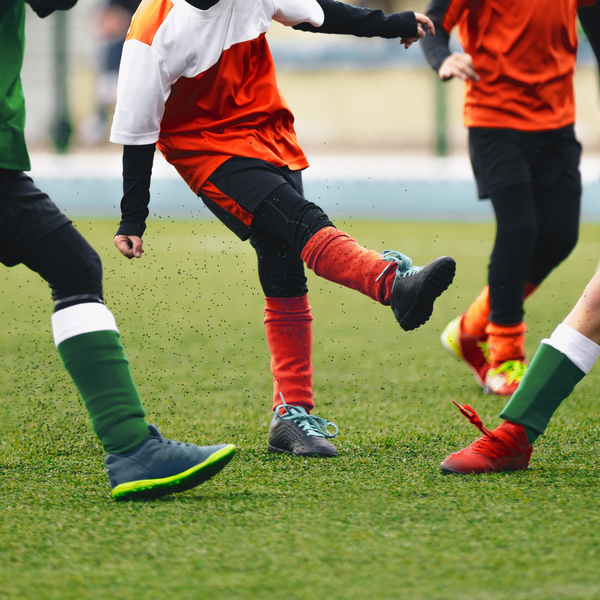.jpeg) Sports injuries are not restricted by the level of your performance. You don’t have to be a pro athlete or a member of a team in order to suffer one. You basically just have to be (or have been) moving.
Sports injuries are not restricted by the level of your performance. You don’t have to be a pro athlete or a member of a team in order to suffer one. You basically just have to be (or have been) moving.
The feet and ankles are particularly vulnerable to sports injuries because of the great amounts of force they endure during activity. They’re made to endure these forces well, but sometimes things just become too much.
When a sports injury strikes, do not try to push through it. Keep off the injury as best as you can, and give us a call. We are pros in sports injury treatment and will be more than happy to help you get back in the game.
Types of Sports Injuries
As we noted, sports injuries tend to occur when your feet or ankles take on more force than they are conditioned to handle. This leads to strains, tears, rips, cracks, and other painful problems.
In general, this overload can happen in two ways:
- Acute injuries, in which that force hits hard and suddenly – such as from a tackle or a roll of the ankle. Sprains and fractures are typical injuries under this category.
- Overuse injuries, in which we place too great a demand on our bodies without providing time to adjust or rest. This can happen more suddenly (such as breaking out into a dead sprint without warming up) or over time (the repetitive impacts of running and other activities).
Additional examples of overuse injuries in the feet and ankles include, but are not limited to:
- Achilles tendonitis
- Plantar fasciitis
- Bursitis
- Neuromas
- Stress fractures
No matter what type of injury you sustain – whether pain arises immediately or after a workout – it’s a clear signal for you to stop what you’re doing and give us a call. Continuing as normal is a good way to risk further injury.
Treating Sports Injuries
A sports injury can be a very frustrating experience, especially if you are on a team, pursuing personal goals, or just love what you do. You want to get back to action as soon as you can, but not giving your body enough time and care for a full recovery can risk re-injury, which then increases your chances of chronic problems.
At Third Coast Foot and Ankle, our primary goal for sports injuries will always be to get you back to full strength as quickly and as safely as possible. There may still be some rest time involved, but we can also help you make the most of it by planning exercises and activities that won’t place as much stress on your recovery area.
The treatment plan we recommend for a sports injury largely depends on the type, location, and severity, as well as the needs of the patient. Parts of a treatment plan might include:
- Classic RICE (Rest, Ice, Compression, Elevation) therapy
- Advanced treatments such as amniotic injections to promote faster soft tissue healing
- Stretches and conditioning exercises to rehabilitate injured areas
- Changes to more accommodative footwear
- Changes to activity types and routines
- The use of custom orthotics to draw excess forces away from vulnerable areas
- Shockwave Therapy
In some situations, if conservative methods don’t get results, we may consider surgical intervention. If surgery is a consideration, we will fully discuss everything you may need to know about what a procedure might entail.
Get Expert Help Right Here in the Milwaukee Area
You don't have to go far to get top-notch sports injury care for a foot or ankle injury. We're here to help folks in Wauwatosa, West Allis, and all points beyond. Schedule an appointment by calling our office in New Berlin at (262) 821-1588, to schedule an appointment with a board-certified podiatrist today.

